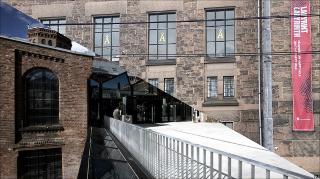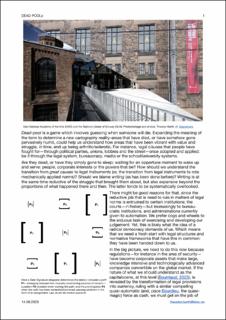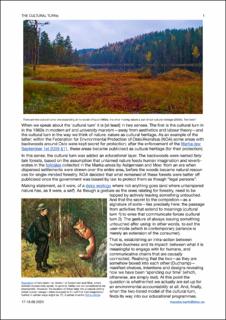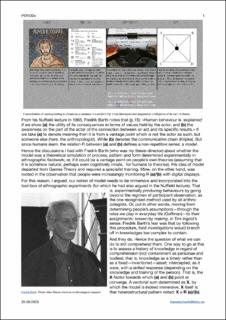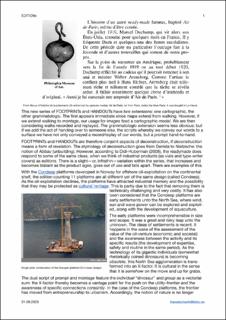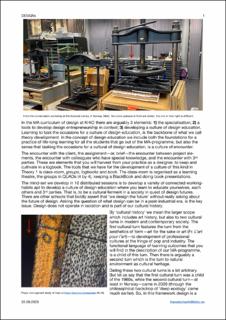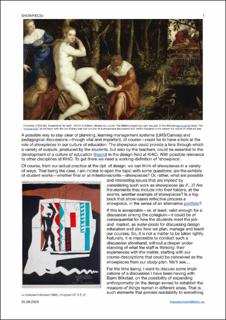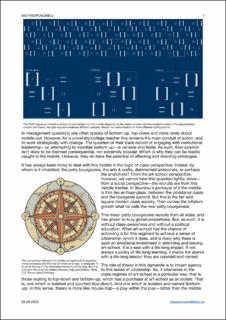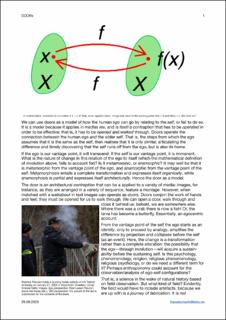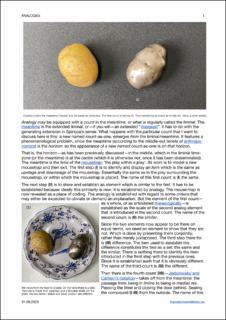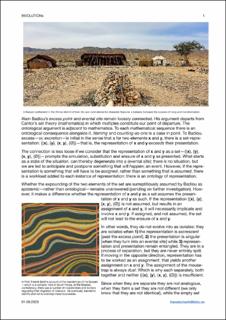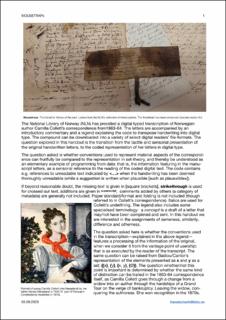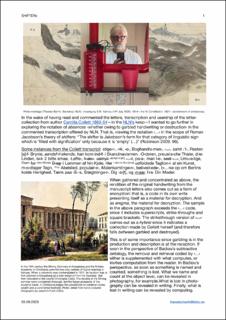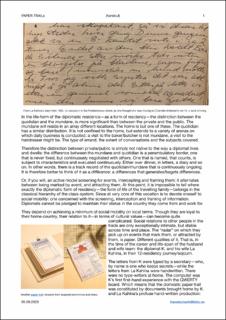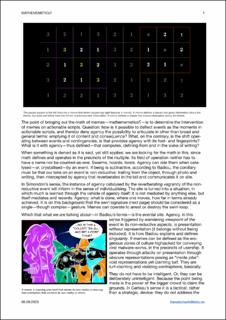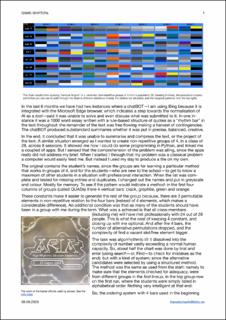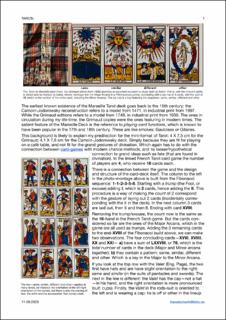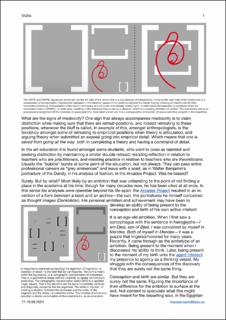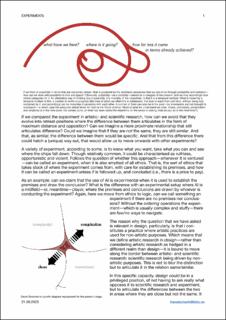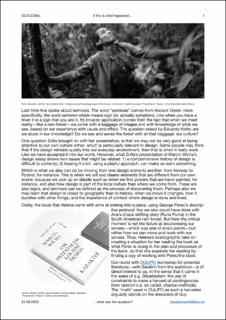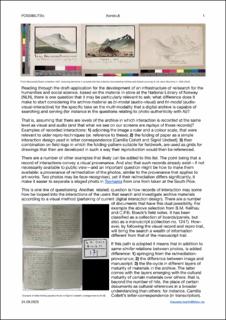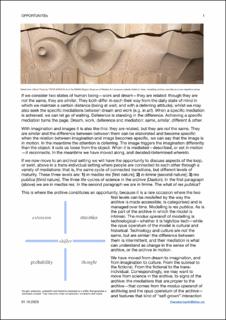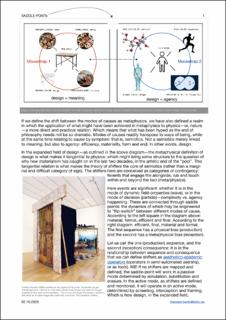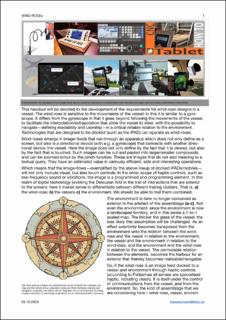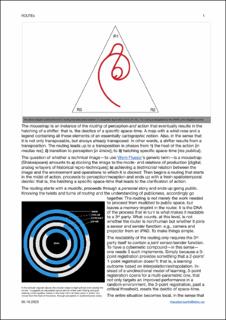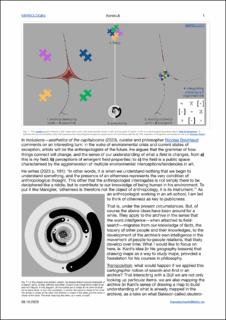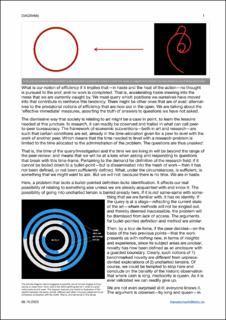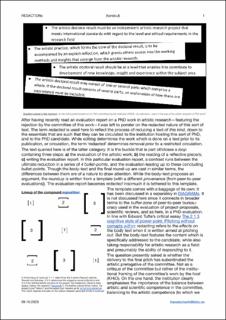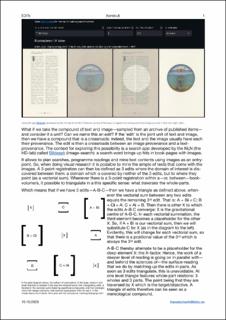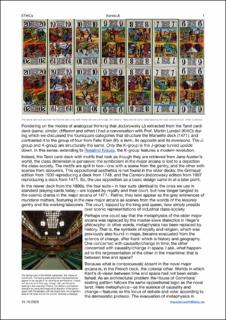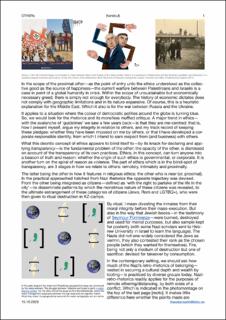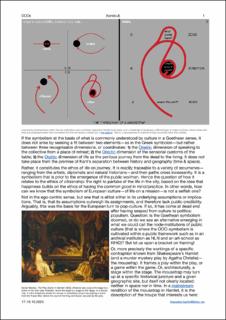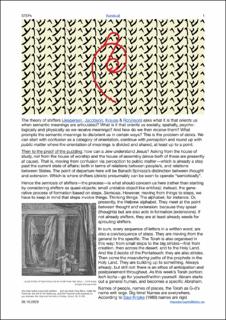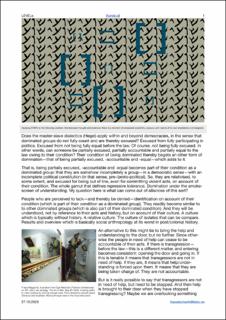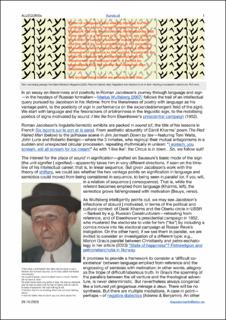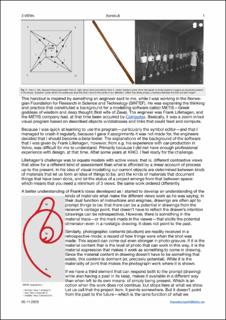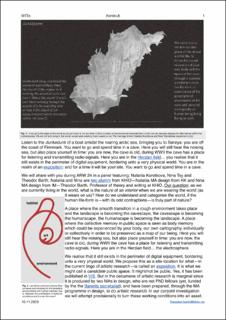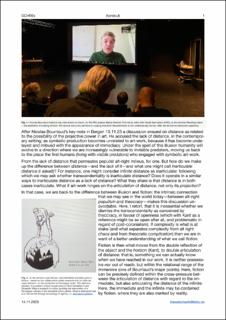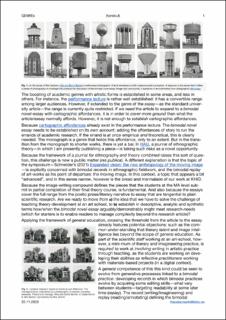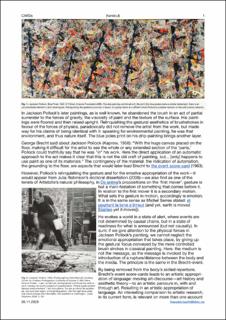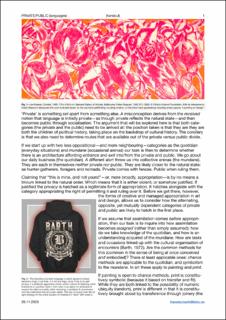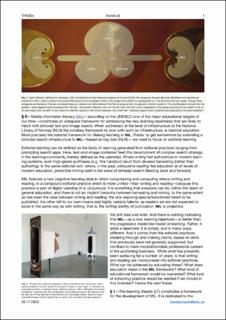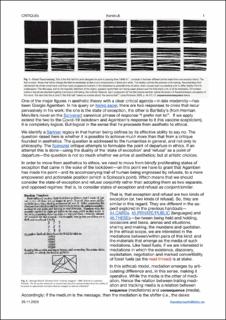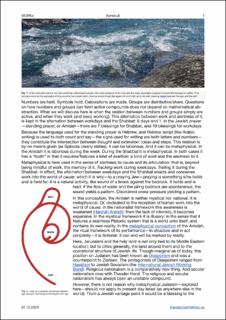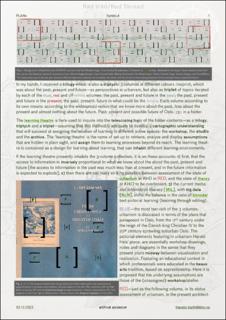| dc.description.abstract | Footprints and Handouts spring from designer Norman Potter’s idea for a publication announced in his workshop monograph on various exchanges (projects, correspondence, poetry and performance) that he did during his life in Models and Constructs—Margin Notes for a Design Culture (1990). He announced the forecasted footprints and handouts in the following terms (he never got to publish them as he passed away in 1995):
“There is an unseen part of this book, drawn from from my teaching work in architecture. This component split off at an early stage, and I hope to publish it separately under the title Footprints and handouts.”
Footprints come from steps: the sense of solitary exploration in which each new footstep follows the next. A performative definition of each step, is that it projects a new step to follow it. Each new step leaves the previous step and implies a step to come. Walking—and its footprints—therefore counts a minimum of three steps (rather than two). Footprints feature the parcours: the perambulation of the topics in the present second collection is a case in point. It is a parcours.
Handouts come from giving: the sense interactive exploration in which the each handout features a snapshot of an exchange fragment in very different relationships. Essentially they celebrate a culture of education, which might be a rephrasing of theory in our time: beyond pedagogy, the innate cognitive human proclivity to theorise.
From Gilbert Simondon we know that ‘information’ also writes ‘in formation’. Accordingly, if we are interested in information in other terms than the bandwidth and computing needed for signal accuracy—that messages are wired—and instead are interested in information as a category of marks with a potential of clarifying the terms on which problems are set (precisation, Arne Næss), then we can take interest in the fictional aspects of information that will be marked by reality.
Once something has come to pass is already the past: as it happens—especially if it appears to be random—it has a projective power, and thereby a future, opening up for our response as it happens in the present. From lack of such performance, or response, the random turns into futures past. What could have been but never came about. The idea that we do not impose form, but that reality is constantly in formation, changes our odds quite a bit (cf, our approach to steps).
If we use chance-methods—which has been quite common in the art-field over the years—what we get is contingencies: if we want to turn these into vantage points of their own, which are unhinged from our presence/absence, then we have turned from the determining importance of our presence/absence as an illusion, to an understanding of fiction as a vehicle through which the real can think itself. That reality truly is a thinking thing. And that fiction is the complement of form. | en_US |
